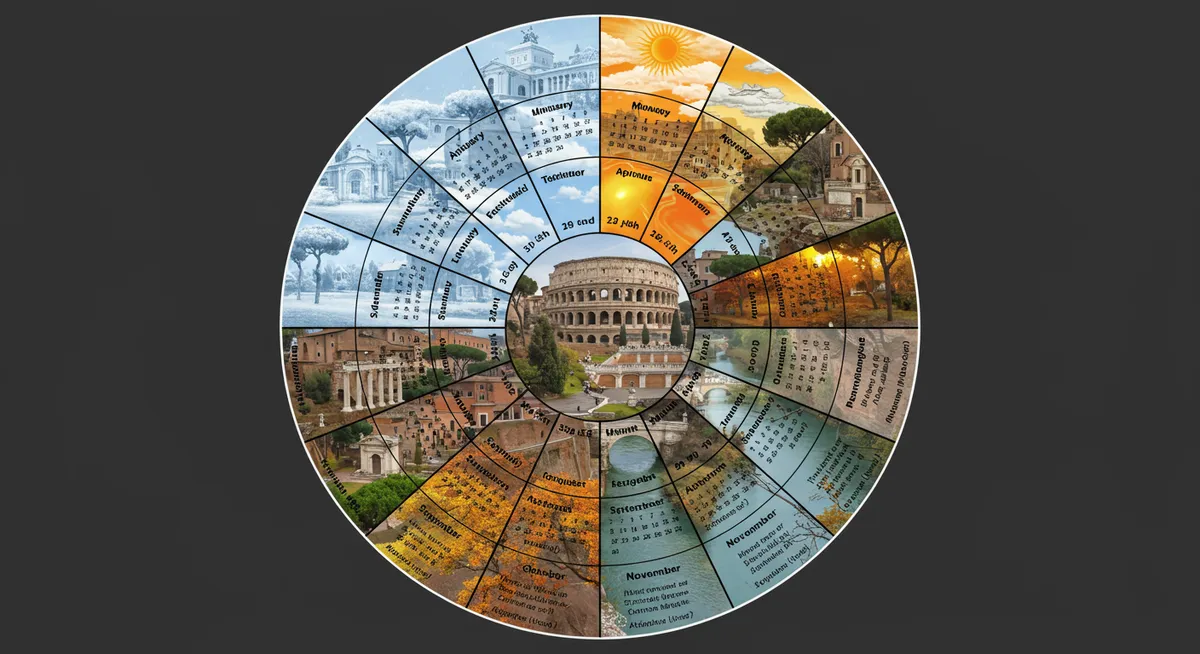Navigating Rome Weather by Month for Your Ideal Visit
As a seasoned traveler who has explored Rome extensively, I've learned that understanding Rome weather by month is key to a truly enjoyable visit. From the vibrant warmth of summer to the crisp charm of winter, each season offers a unique perspective on the Eternal City. This comprehensive guide will help you navigate the climatic nuances of Rome, ensuring your trip is as comfortable and memorable as possible, no matter when you decide to explore its timeless wonders. Enhance your Rome experience with our Rome itinerary. Organize your journey with our comprehensive Rome itinerary.
Spring (March-May): Mild & Pleasant
Plan this trip faster with our free online itinerary maker. Get a personalized day-by-day plan in minutes.
Spring in Rome is often considered the most delightful time to visit, with the Rome weather by month showing a beautiful progression from cool to comfortably warm. March can still have chilly evenings, but by April, temperatures are consistently mild and pleasant, averaging around 18-22°C (64-72°F). May sees even warmer conditions, perfect for exploring iconic outdoor attractions like the Colosseum or strolling through the Roman Forum. Rainfall decreases steadily through spring, making it an excellent time for long walks. I always recommend packing layers for spring evenings, as temperatures can drop surprisingly. For more detailed planning, consider creating a comprehensive Rome itinerary. Find the perfect place to stay with our Rome accommodation guide.
Summer (June-August): Hot & Sunny
Summer truly brings the heat to Rome, with the weather by month in June beginning the trend of consistently high temperatures. July and August are typically the hottest months, often exceeding 30°C (86°F), sometimes reaching 35°C (95°F) or higher. Rainfall is minimal, and the days are long and filled with sunshine. While many Romans escape to the coast in August, the city remains vibrant, albeit with more tourists. My top tip for summer visitors is to prioritize early morning or late evening sightseeing and embrace the midday siesta. Staying hydrated is paramount, so always carry a water bottle. Plan your perfect trip with our Rome itinerary.
Autumn (September-November): Comfortable & Picturesque
Autumn offers a truly picturesque transition in Rome, with the Rome weather by month gradually cooling and becoming wonderfully comfortable after the summer heat. September often feels like an extension of summer, but by October, temperatures are very pleasant, ranging from 15-20°C (59-68°F), ideal for leisurely walks through Villa Borghese's autumnal splendor. November sees cooler temperatures and an increase in rainfall, bringing a crispness to the air. The vibrant autumn foliage adds a charming backdrop to the city's ancient ruins. I find this season perfect for exploring indoor museums and galleries without the intense summer crowds. Find the perfect place to stay with our Rome accommodation guide.
Winter (December-February): Cool & Atmospheric
Winter in Rome is generally cool and mild compared to many other European capitals, making the Rome weather by month relatively gentle and inviting. December through February sees average temperatures between 8-13°C (46-55°F), with occasional dips below freezing overnight. While snowfall is rare, rain showers are more frequent, so packing a good umbrella and waterproof shoes is advisable. The city feels incredibly atmospheric during these months, especially around Christmas and New Year. Visiting the Vatican during winter can mean significantly shorter lines, which is a huge bonus! Don't miss exploring the city's charming festive markets. Enhance your Rome experience with our Rome itinerary.
Frequently Asked Questions
When is the best time to visit Rome based on weather?
What should I pack for Rome in different seasons?
Does it rain a lot in Rome?
Understanding Rome weather by month is truly key to maximizing your travel experience. Each season offers a distinct atmosphere, from the vibrant warmth of summer to the atmospheric coolness of winter. By aligning your visit with your preferred climate, you can fully immerse yourself in the Eternal City's unparalleled history and beauty. Whether you prefer sunny skies or crisp, cool air, Rome welcomes you year-round. As a seasoned travel content creator at Itimaker, I love sharing practical advice to help you plan your perfect escape.
